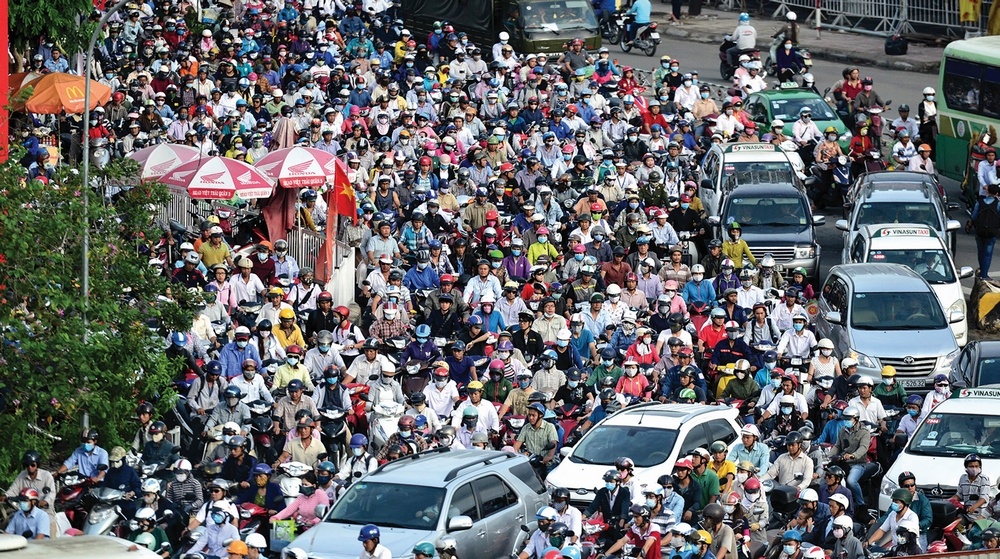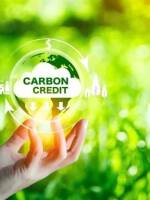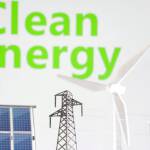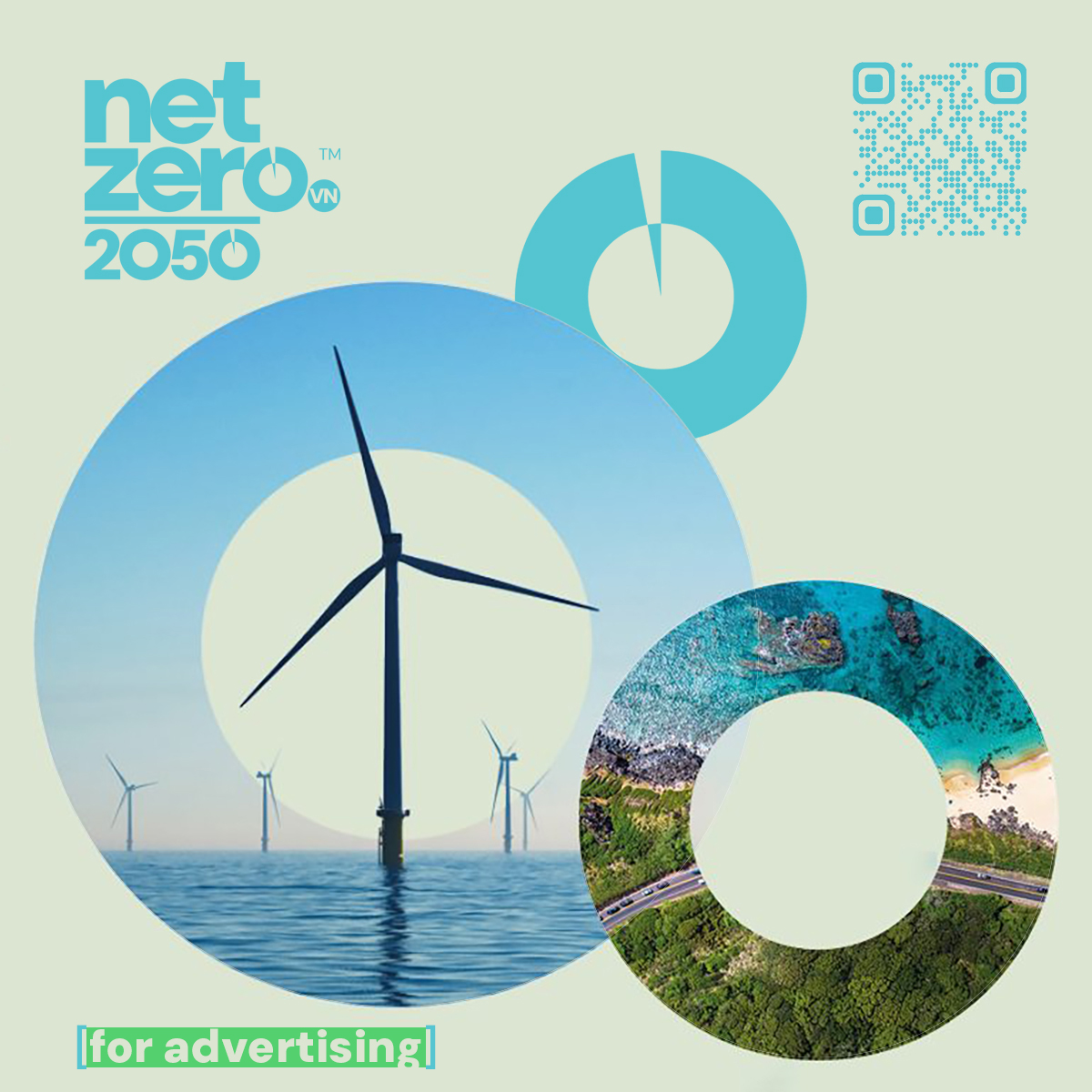
According to the World Health Organization (WHO), air pollution leads to about seven million premature deaths each year. Fine particulate matter (PM2.5) can cause or aggravate diseases such as asthma, cancer, stroke, and lung disease. High PM2.5 concentrations also adversely affect children’s cognitive development, cause mental health problems, and complicate underlying diseases such as diabetes.
In 2023, only 10 countries and 9 per cent of cities met the WHO’s PM2.5 standard. PM2.5 is also linked to climate change, with fossil fuel emissions being the main cause. Tackling air pollution and climate change simultaneously is feasible, offering opportunities to improve the environment and public health.
The same year, Vietnam ranked 22nd in the list of countries with the worst air quality, with an average AQI of 88, reflecting a worrying pollution situation. Although not as severe as Bangladesh or Pakistan, the pollution level in Vietnam is still at an unhealthy level, especially dangerous for sensitive groups such as children, the elderly and people with respiratory diseases.
On the morning of January 3, Hanoi recorded the highest air pollution level in the world with an average AQI of 284, according to IQAir. This is a very harmful level for health, especially for sensitive groups such as children, the elderly and people with respiratory diseases. Hanoi surpassed the top polluted cities such as Delhi and Karachi, maintaining its position in the group of the most polluted cities globally.
In Tay Ho district, the AQI reached 557, a dangerous level, while neighbouring areas all exceeded 400. Haiphong also recorded AQI 272. On the evening of February 10, Hanoi continued to be recorded as the most polluted city in the world, with an AQI of 188.
By January 24, Ho Chi Minh City had risen to second place in the list of most polluted cities, with PM2.5 concentrations 11 times higher than the WHO’s recommendations. This situation poses a major challenge, requiring emission control measures, traffic improvement, and increased green areas to protect public health.
Vietnam needs to reduce traffic emissions through measures such as road cleaning to reduce dust, traffic regulation to reduce congestion, building low-emission areas, developing public transport, electrifying vehicles, supporting the production and use of electric vehicles (EVs) through credit mechanisms, developing charging station infrastructure, and subsidising EVs. At the same time, it is necessary to strictly control emission sources and raise public awareness to improve sustainable air quality.
Modern transport policy
In 2024, around 17 million EVs were sold globally, with 65 per cent in China. Europe sold around 3 million EVs, with the UK seeing a 58 per cent on-year increase in battery EV sales thanks to heavy investment. The UK government required zero-emission vehicles to account for 22 per cent of sales in 2024, aiming for 80 per cent by 2030 and 100 per cent by 2035.
In the first nine months of 2024, EV sales in China increased by 31 per cent, driven by strong growth in plug-in hybrid EVs and extended-range ones.
Major manufacturers are pushing into this segment from 2025. The Chinese government has implemented a transport electrification policy to reduce air pollution and has rolled out a series of strong support measures to encourage use of EVs and plug-in hybrids, including credits, subsidies, tax incentives, and charging infrastructure development.
According to Gartner, the global EV fleet will reach 85 million by the end of 2025, with China accounting for more than half (49 million), far ahead of Europe (20.6 million) and North America (10.4 million). China’s new energy vehicle industry is expected to expand to $3.16 billion by 2026. Shenzhen is a prime example, having converted all 16,000 buses from diesel to electric since 2017 thanks to government subsidies.
China also requires at least 30 per cent of new government vehicles purchased each year to be classed as new energy, in order to reach its net-zero emissions target by 2060. To maintain this progress, CO2 emissions from new passenger cars must fall to zero by 2035, while emissions from commercial vehicles need to fall 74 per cent from 2012 levels.
Vietnam, especially large cities such as Hanoi, Ho Chi Minh City and Haiphong, are facing serious air pollution due to the increase in personal vehicles using fossil fuels.
According to the experience of developed countries such as the UK, the US, France, Sweden, and China, electrifying transport through credits, encouraging EVs, implementing low emission zones, and applying strict emission standards can effectively reduce air pollution and greenhouse gases.
Electrification experience

To make this transition, Vietnam needs a comprehensive strategy, combining financial incentives, infrastructure investment and appropriate traffic regulation policies.
First, financial support and incentives for consumers and businesses are key. Countries like France and the US have been successful with subsidy and rebate schemes. The California Clean Vehicle Rebate Programme has allocated more than $1.4 billion since 2009, providing $7,500 in subsidies to EV buyers, helping to reduce nearly 10 million tons of CO2. France supports €4,000-7,000 for low-income people to buy EVs.
Vietnam can learn from this by implementing financial support, credits, exemptions from special consumption tax, reductions in import tax on components, and preferential credit support for domestic manufacturing enterprises. The policy of exchanging old cars for electric cars, like China, is also an effective solution to replace polluting vehicles.
Second, developing charging infrastructure and smart grids is key to popularising EVs in Vietnam. Currently, the lack of charging stations is a major barrier. China has succeeded by investing heavily in fast charging networks, with more than 2 million charging stations nationwide. Vietnam needs to plan charging stations in large cities, public parking lots, shopping malls and highways.
The government should cooperate with private enterprises to develop fast charging stations and integrate smart grids, optimising renewable energy. Mobile charging station models and home charging stations should also be deployed to increase accessibility for people.
Third, implementing a low-emission zone policy and restricting old petrol vehicles in Hanoi, Ho Chi Minh City, and other crowded cities is an effective solution to reduce pollution. Such zones have been successful in Beijing, London, and Milan, significantly reducing emissions by restricting high-emission vehicles from entering the central area.
Hanoi and Ho Chi Minh City can pilot a ban on old low-emission vehicles, while charging emission fees for petrol and diesel vehicles. Prioritising dedicated lanes for EVs and electric buses is also a way to encourage the use of clean vehicles.
Fourth, implementing strict emission standards and promoting domestic EV production is a necessary direction. The US has been successful with various initiatives, and China also aims for 20 per cent of vehicles on the road to be clean. Vietnam can raise emission standards for fossil fuel vehicles and encourage investment in EV production.
The government should aim for 30 per cent of new vehicles sold by 2030 to be zero-emission vehicles, while supporting companies like VinFast through EV credits, tax incentives, research and development subsidies, and incentives for domestic consumption and exports.
Fifth, boosting the use of EVs in public transport and freight transport is an effective solution to reduce pollution. China has required buses and taxis in many major cities to switch to electric or plug-in hybrid vehicles. Vietnam can apply a similar model, requiring urban bus routes and taxis to gradually switch to EVs, while providing financial and infrastructure support to transport units. The government should also offer tax incentives or subsidies to logistics enterprises investing in electric trucks, contributing to reducing emissions from freight transport.
By synchronously implementing these solutions, Hanoi, Ho Chi Minh City, and Haiphong will not only improve air quality but also promote a green economy, reduce dependence on fossil fuels, and create momentum for the development of the domestic EV industry.
Ha Quoc Dung




